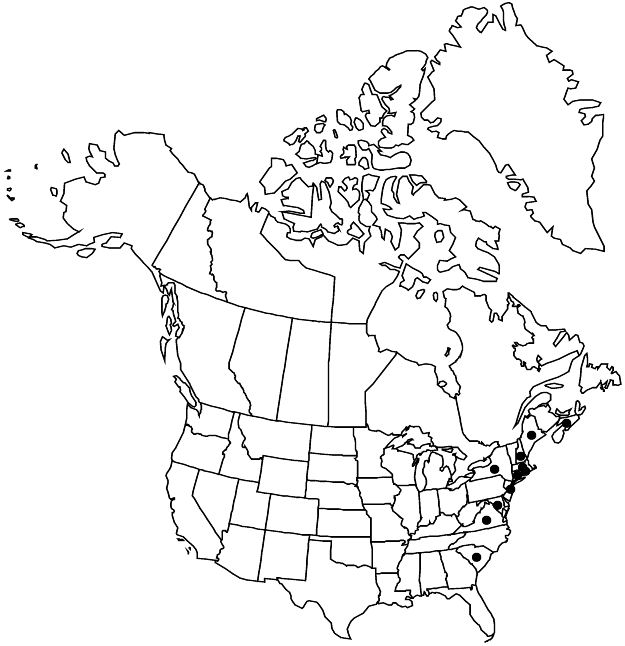Difference between revisions of "Amelanchier nantucketensis"
Bull. Torrey Bot. Club 38: 453. 1911.
FNA>Volume Importer |
imported>Volume Importer |
||
| (3 intermediate revisions by 2 users not shown) | |||
| Line 13: | Line 13: | ||
}}{{Treatment/ID/Special_status | }}{{Treatment/ID/Special_status | ||
|code=F | |code=F | ||
| − | |label= | + | |label=Illustrated |
}} | }} | ||
|basionyms= | |basionyms= | ||
| Line 19: | Line 19: | ||
|name=Amelanchier oblongifolia var. micropetala | |name=Amelanchier oblongifolia var. micropetala | ||
|authority=B. L. Robinson | |authority=B. L. Robinson | ||
| + | |rank=variety | ||
}} | }} | ||
|hierarchy=Rosaceae;Rosaceae subfam. Amygdaloideae;Rosaceae tribe Gillenieae;Amelanchier;Amelanchier nantucketensis | |hierarchy=Rosaceae;Rosaceae subfam. Amygdaloideae;Rosaceae tribe Gillenieae;Amelanchier;Amelanchier nantucketensis | ||
| Line 45: | Line 46: | ||
-->{{#Taxon: | -->{{#Taxon: | ||
name=Amelanchier nantucketensis | name=Amelanchier nantucketensis | ||
| − | |||
|authority=E. P. Bicknell | |authority=E. P. Bicknell | ||
|rank=species | |rank=species | ||
| Line 59: | Line 59: | ||
|publication title=Bull. Torrey Bot. Club | |publication title=Bull. Torrey Bot. Club | ||
|publication year=1911 | |publication year=1911 | ||
| − | |special status=Endemic; | + | |special status=Endemic;Illustrated |
| − | |source xml=https:// | + | |source xml=https://bitbucket.org/aafc-mbb/fna-data-curation/src/2e0870ddd59836b60bcf96646a41e87ea5a5943a/coarse_grained_fna_xml/V9/V9_1129.xml |
|subfamily=Rosaceae subfam. Amygdaloideae | |subfamily=Rosaceae subfam. Amygdaloideae | ||
|tribe=Rosaceae tribe Gillenieae | |tribe=Rosaceae tribe Gillenieae | ||
Latest revision as of 23:54, 5 November 2020
Shrubs, 0.3–2.5 m. Stems 1–70, rhizomatous, suckering and forming colonies. Leaves less than half-unfolded; petiole (6–)9–15(–22) mm; blade elliptic to oblanceolate or oblong-elliptic, (11–)29–41(–55) × (13–)19–29(–42) mm, base rounded to cuneate, each margin with 0–4(–10) teeth on proximal 1/2 and (0–)3–8(–12) teeth in distalmost cm, largest teeth less than 1 mm, apex subacute to rounded and mucronate, abaxial surface densely (moderately) hairy by flowering, surfaces sparsely hairy (or glabrous) later. Inflorescences (4–)6–8(–11)-flowered, (12–)24–36(–53) mm. Pedicels: (0 or)1(or 2) subtended by a leaf, proximalmost (4–)7–14(–38) mm. Flowers: sepals irregularly spreading or recurved after flowering, (1.3–)2–3(–3.9) mm; petals spatulate to oblong, (2.2–)3–4.5(–6.8) × (0.6–)1–2(–3) mm, sometimes bearing 1 or 2 tiny pollen sacs near margins on adaxial surfaces; stamens (12–)18–20; styles (4 or)5, (1.7–)2.6–3.7(–4.3) mm; ovary apex glabrous or sparsely to densely hairy. Pomes dark purple-blue, 7.5–10 mm diam. 2n = 4x.
Phenology: Flowering Mar–May; fruiting Jun–Jul.
Habitat: Fields, sand-plain grasslands, heaths, glacial outwash plains, forest openings, disturbed sites, stream shores, among rocks or sand, dry habitats, ditches, swales
Elevation: 0–400 m
Distribution

N.S., Conn., Maine, Md., Mass., N.H., N.J., N.Y., R.I., S.C., Va.
Discussion
In the absence of flowering material, identification of Amelanchier nantucketensis is tentative; it is easily confused with A. spicata. K. M. Wiegand (1912) thought that A. nantucketensis originated as a hybrid between A. spicata (which he called A. stolonifera) and A. canadensis (as A. oblongifolia).
Amelanchier nantucketensis can reach 2.5 m but is usually much shorter, with spindly, straight, pale gray stems. Some petals of A. nantucketensis bear 1 or 2 tiny pollen sacs near margins on adaxial surfaces. Petal-borne pollen, which is highly unusual within the plant kingdom, is viable in A. nantucketensis and associated with a unique pollinator guild of native bees (A. C. Dibble et al. 1997). Conservation challenges for this apomictic tetraploid were discussed by Dibble and C. S. Campbell (1995).
Amelanchier nantucketensis has been documented to be self-compatible and able to produce seed asexually (C. S. Campbell et al. 1987).
Selected References
None.
